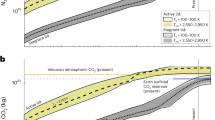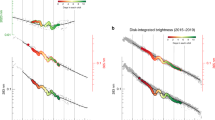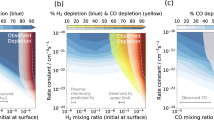Abstract
THE absence of oxygen in the atmosphere of Venus, as shown by St. John's spectroscopic observations, and the consequent absence of life such as we know, are scarcely what one would expect at first sight on a planet so much like the earth in size and mass and having a mean temperature within the range of terrestrial abodes of life. An explanation, however, is suggested by further consideration of what might happen to the earth and its inhabitants if it could be transferred to the orbit of Venus, and also have its axial rotation speed reduced to one revolution in several weeks.
This is a preview of subscription content, access via your institution
Access options
Subscribe to this journal
Receive 51 print issues and online access
$199.00 per year
only $3.90 per issue
Buy this article
- Purchase on SpringerLink
- Instant access to full article PDF
Prices may be subject to local taxes which are calculated during checkout
Similar content being viewed by others
Author information
Authors and Affiliations
Rights and permissions
About this article
Cite this article
WEBSTER, D. Meteorological, Geological, and Biological Conditions on Venus. Nature 120, 879–880 (1927). https://doi.org/10.1038/120879a0
Issue date:
DOI: https://doi.org/10.1038/120879a0
This article is cited by
-
Tidal locking of habitable exoplanets
Celestial Mechanics and Dynamical Astronomy (2017)



